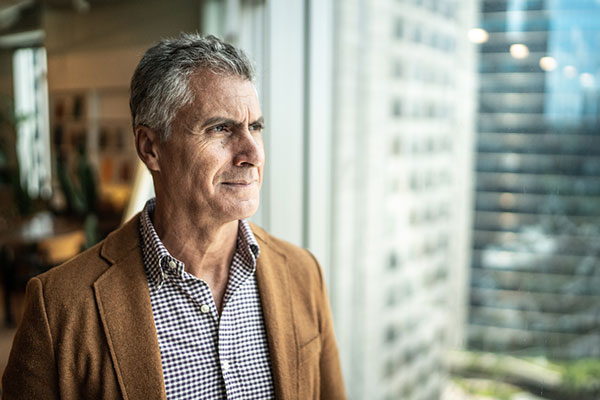Two years on: how did four portfolios for income seekers fare?
Jennifer Hill examines how a handful of hypothetical income portfolios have performed.
5th March 2024 09:34
by Jennifer Hill from interactive investor

Two years ago, we asked three financial advisers and our own research team at interactive investor to suggest a portfolio for an income-seeking investor. Since then, we’ve had a cost-of-living crisis driven by rampant inflation, a meltdown in the UK bond market, a banking crisis in the US and Europe, and ongoing war in Ukraine.
2022 was particularly tough with equities and bonds simultaneously selling off amid successive interest rate rises, which led to risk-off sentiment across assets and had investors clamouring for cash.
- Invest with ii: Open a Stocks & Shares ISA | ISA Investment Ideas | Transfer a Stocks & Shares ISA
So, how have the portfolios fared over the past two years? Let’s take a look.
£50,000 portfolio
The £50,000 portfolio suggested by First Wealth has grown 5.5% in absolute terms over the two years to 29 January – spurred by the rebound in developed world equities towards the end of the period.
When building portfolios, the adviser takes the same approach for income-seekers as it does for those seeking capital growth, creating portfolios that are well diversified globally across equities and bonds, using low-cost passive funds and aiming for total returns.
The firm is conscious of its impact on the environment and the equity allocation is populated with funds that track indices screened for environmental, social and corporate governance (ESG) criteria and exclude companies based on the negative effect their conduct or products have on society and/or the environment.
For clients investing for income, the adviser establishes fixed regular withdrawals funded by selling units in the portfolio at an agreed frequency. Taking income of 0.3% on the first of each month, a total of 3.6% per year, the £50,000 portfolio would have generated income of £3,574 over the two years and now be worth £48,833.
“The benefit and limitations of diversification have been in full view over the last two years,” says Ben Brown, a chartered financial planner at First Wealth.
“The ‘Great Inflation’ ranked as the seventh-worst year for the US stock market, which fell by more than 18% in 2022. This had a profound knock-on effect for the bond market.”
First Wealth’s preference for relatively short-dated corporate bonds over government and longer-dated bonds insulated the portfolio somewhat, the latter being more sensitive to interest rate changes.
Optimism that the interest rate cycle has peaked has provided “green shoots of recovery with bonds generating the highest yields seen for 15 years”, adds Brown, who retains long-term conviction in the portfolio, which he would rebalance twice a year.
| Fund | Allocation | Total return 29 Jan 2022 to 29 Jan 2024 (two years) | |
| Vanguard ESG Developed World All Cap Equity Index | 46.00% | 14.23% | |
| Vanguard ESG Emerging Markets All Cap Equity Index | 8.00% | -7.28% | |
| iShares Environment & Low Carbon Tilt Real Estate Index | 6.00% | -8.49% | |
| Vanguard Global Short-Term Corp Bond Index £ H Acc | 27.00% | -0.43% | |
| BlackRock Corporate Bond 1-10 Year D | 13.00% | -4.21% |
£100,000 portfolio
The £100,000 portfolio suggested by Tom Munro, a financial adviser at McHardy Private Wealth (to which he sold his eponymous firm since the original article published), has lost 3.89% over a tricky two years.
Munro’s strategy involves investing in three low-cost globally diversified passive funds with stepped levels of risk and retaining a cash buffer to provide income of £5,000 per year, or 5% of the original investment.
For the first two years, he held back £8,000 in cash – £5,000 to provide the entire first year’s income and £3,000 as a buffer against volatile markets in year two.
To top up the cash buffer to meet the required income in year two, he would draw down £2,000 from the Vanguard LifeStrategy 20% Equity fund, the lowest risk of the three.
One benefit of higher interest rates is that Munro is now able to get 4.2% on cash holdings and after the income withdrawal, the overall portfolio is now worth £86,232.
- Where pro fund buyers are investing their ISAs this year
- ISA ideas: out-of-form areas pros think will make a comeback
To cater for income in years three and four he would withdraw £5,000 cash at the beginning of the year – £2,500 each from the LifeStrategy 20% and Vanguard LifeStrategy 40% Equity funds, leaving the highest-risk Vanguard LifeStrategy 80% Equity fund to generate longer-term returns.
Vanguard rebalances the portfolios automatically, usually every quarter, and Munro would undertake periodic reviews aimed at transferring assets to the lower-risk pots as they become depleted over time.
Munro says: “Economic uncertainty caused by geopolitical events and trade tensions have created fierce headwinds over the past two years. Uncertainty surrounding Brexit, the US-China trade war and other geopolitical developments have led to market volatility and increased risk aversion among investors.
“Scrutinising my portfolio, two-year performance has suffered as a result of these issues but the uptick in performance since the fourth quarter of last year of around 6% has steered me to hold for the time being.”
| Fund | Original allocation | Total return 1 Feb 2022 to 31 Jan 2024 (two years) | |
| Vanguard LifeStrategy 20% Equity | 45%* | -8.28% | |
| Vanguard LifeStrategy 40% Equity | 27%* | -4.34% | |
| Vanguard LifeStrategy 80% Equity | 20%* | 5.02% |
* Adds to 92% due to 5% cash pot for year one and 3% cash buffer for year two.

£250,000 portfolio
The £250,000 portfolio suggested by Ben Yearsley, co-founder of Fairview Investing, has made a small loss of 4.2% in the two years to 31 January – not bad considering its higher-risk profile.
Buying income units and taking the natural income would have generated £13,417 in income over the period and resulted in a portfolio worth £225,759 today.
Yearsley split the assets equally between 10 funds and investment trusts, resulting in a concentrated portfolio predominantly exposed to equities, but covering income and growth investment styles and real assets such as infrastructure, property and gold.
The clear winner has been Schroder Global Recovery, which is up almost 12% thanks to its value investing approach being firmly in vogue. Temple Bar Ord (LSE:TMPL), which similarly fishes in unloved parts of the market, also made a positive total return.
However, the portfolio’s overweight to Asia, dragged down by China’s economic malaise, and underweight to the US, turbocharged by the Magnificent Seven tech stocks, has held it back.
- Ian Cowie: ignore the doom-mongers, 32 trusts are in ISA millionaires’ club
- 10 investment trusts for a £10,000 annual income in 2024
“In a nutshell, the portfolio has been rubbish,” says Yearsley. “However, we’ve had lots of stuff going on in markets and two of my key long-term growth areas – Asia/emerging markets and smaller companies – have been distinctly out of favour for a few years now.
“In addition, the UK-listed infrastructure space has been hammered by poor governance issues alongside suspect funding models that have damaged the whole sector.”
The one thing that Yearsley feels the portfolio lacks is a higher risk, higher-growth fund. “I’m slightly surprised I didn’t include WS Blue Whale Growth in this two years ago as it’s a staple of mine in many client portfolios. It delivered about 25% in 2023, which would have given this portfolio a nice boost.
“I’m going to suggest adding it in now and rebalancing to have it as an equal weight with all the other funds.”
| Fund | Original allocation | Current allocation | Total return 1 Feb 2022 to 31 Jan 2024 (two years) | New allocation |
| Schroder Global Recovery | 10.00% | 11.92% | 11.89% | 9.09% |
| First Sentier Global Listed Infrastructure | 10.00% | 11.09% | 4.00% | 9.09% |
| Finsbury Growth & Income Ord (LSE:FGT) | 10.00% | 10.38% | 0.48% | 9.09% |
| Personal Assets Ord (LSE:PNL) | 10.00% | 10.32% | -1.02% | 9.09% |
| Temple Bar Ord (LSE:TMPL) | 10.00% | 9.94% | 3.14% | 9.09% |
| JPMorgan Global Emerging Markets Income Ord (LSE:JEMI) | 10.00% | 9.48% | -6.09% | 9.09% |
| FSSA Asia Focus B | 10.00% | 9.48% | -13.87% | 9.09% |
| Montanaro UK Income | 10.00% | 9.43% | -11.66% | 9.09% |
| ARC TIME UK Infrastructure Inc II C Acc | 10.00% | 9.08% | -13.24% | 9.09% |
| CT Property Growth & Income I Acc | 10.00% | 8.87% | -15.56% | 9.09% |
| WS Blue Whale Growth | 0.00% | 0.00% | 13.32% | 9.10% |
Sustainable portfolio
It has been a tough backdrop for sustainable strategies, but despite this the eight funds chosen two years ago delivered a small gain of 0.7% over the two-year period, from 1 February 2022 to 31 January 2024.
As alluded to in the article two years ago, sustainable investors who are seeking an income have more limited choice. Moreover, there are much fewer options for sustainable investors on the lookout for high dividend yields. This is because some of the highest-yielding sectors of the market, such as tobacco, are off limits for sustainable funds.
This is reflected by the yield for this hypothetical portfolio being 3% (current 12-month yield). Therefore, those who want a higher income – say 4% or 5% – would need to also draw on capital.
Three of the eight funds were removed as part of the annual review of the ACE 40, interactive investor’s sustainable list. As part of the review, which was completed in early November, Climate Assets, Montanaro European Income and FP Foresight Global Real Infrastructure were all removed. The reasons for the removals can be found here.
| Fund | Original allocation | Total return 1 Feb 2022 to 31 Jan 24 (two years) |
| Climate Assets | 25% | 1.30% |
| Baillie Gifford Responsible Global Equity Income | 15% | 14.30% |
| Janus Henderson UK Responsible | 10% | 6.70% |
| Trojan Ethical Income | 10% | 2.30% |
| Montanaro European Income | 10% | -1.60% |
| VT Gravis Clean Energy Income | 10% | -15.20% |
| Rathbone Ethical Bond | 10% | -6.50% |
| FP Foresight Global Real Infrastructure | 10% | -14.50% |
These articles are provided for information purposes only. Occasionally, an opinion about whether to buy or sell a specific investment may be provided by third parties. The content is not intended to be a personal recommendation to buy or sell any financial instrument or product, or to adopt any investment strategy as it is not provided based on an assessment of your investing knowledge and experience, your financial situation or your investment objectives. The value of your investments, and the income derived from them, may go down as well as up. You may not get back all the money that you invest. The investments referred to in this article may not be suitable for all investors, and if in doubt, an investor should seek advice from a qualified investment adviser.
Full performance can be found on the company or index summary page on the interactive investor website. Simply click on the company's or index name highlighted in the article.